Virtual Lab Tour
Date: 2025-05-25
Last Updated: 2025-05-25
I've spent the past week throwing together a new setup in my lab. I can't talk about the end goal of this research just yet for IP reasons. (Cant spoil the surprise ;) ). For now I can show off some of my gear and what I am doing for now.
Showing people experiments in progress is always interesting, becaus quite often they end up with several thousand dollar equipment that costs more than my car, held up by cardboard boxes and sticky tape.
1 Whats in my lab
So here is my whole setup so far. Lets go through it step by step

First we have a laser fed from a single mode optic fiber, going into a collimator (This is the bit which gets the light out of the fiber and into "free-space"). We are using infrared light in the telecom C-Band (This has a wavelength of 1550nm).
Contrary to all the pretty propaganda we photonic scientists put out of us working with big red laser beams, most of the time we are using invisible infrared laser beams.
It then passes through a dispersion film (That white sheet sticky taped to the post). Despite the dodgy appearance of this, it vastly improves the quality of the image.
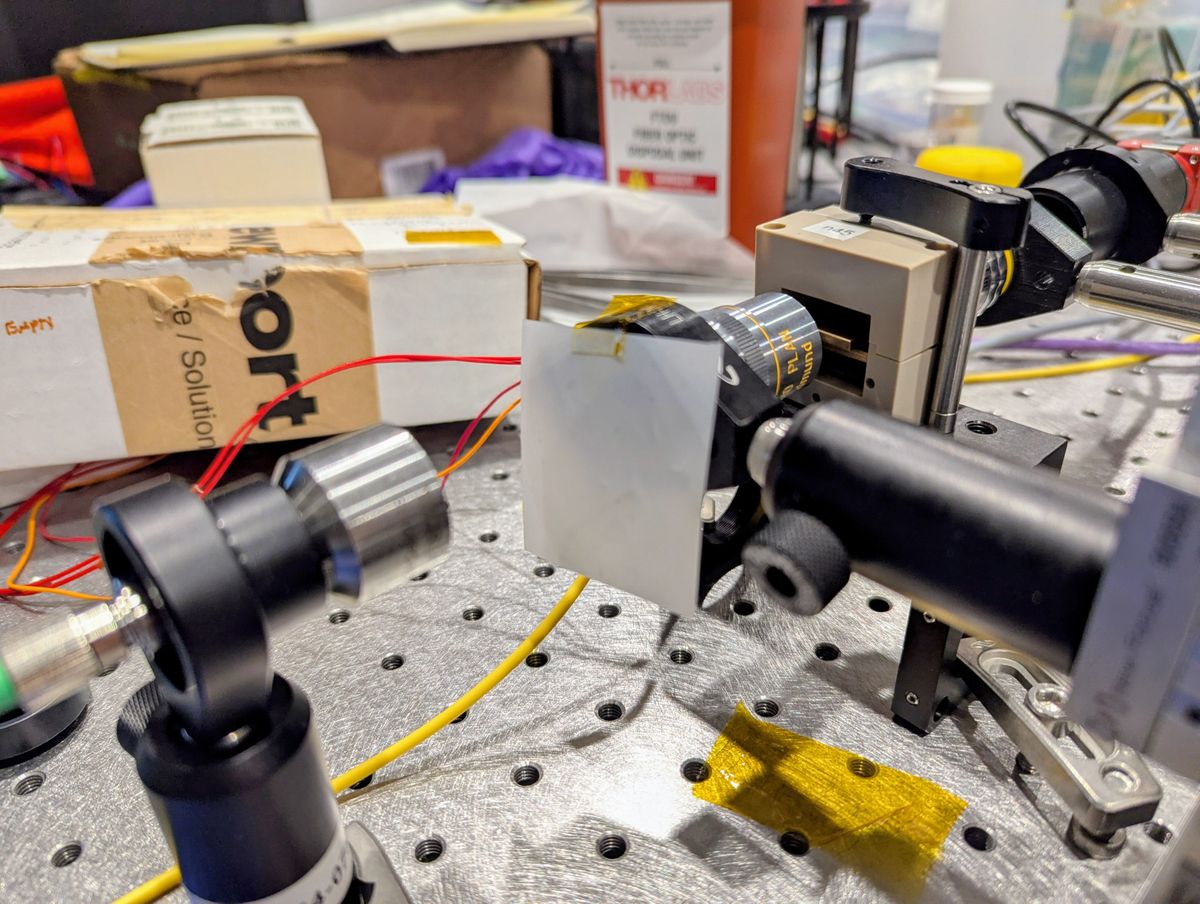
It then passes from the dispersive screen into a 10x microscope objective.I'm using the microscope objective backwards here, using it it to take in a laser beam, and reduce it to the size of a pin-prick. This is to make it small enough for the next step.
From here the tiny beam is coupled into a specialty optic fibre called "Photonic Crystal Fibre". You can see it here, but it is inside the central groove in those brass plates. The fibre and the brass plate holding it are kept in an oven, so I can keep it at a stable temperature.
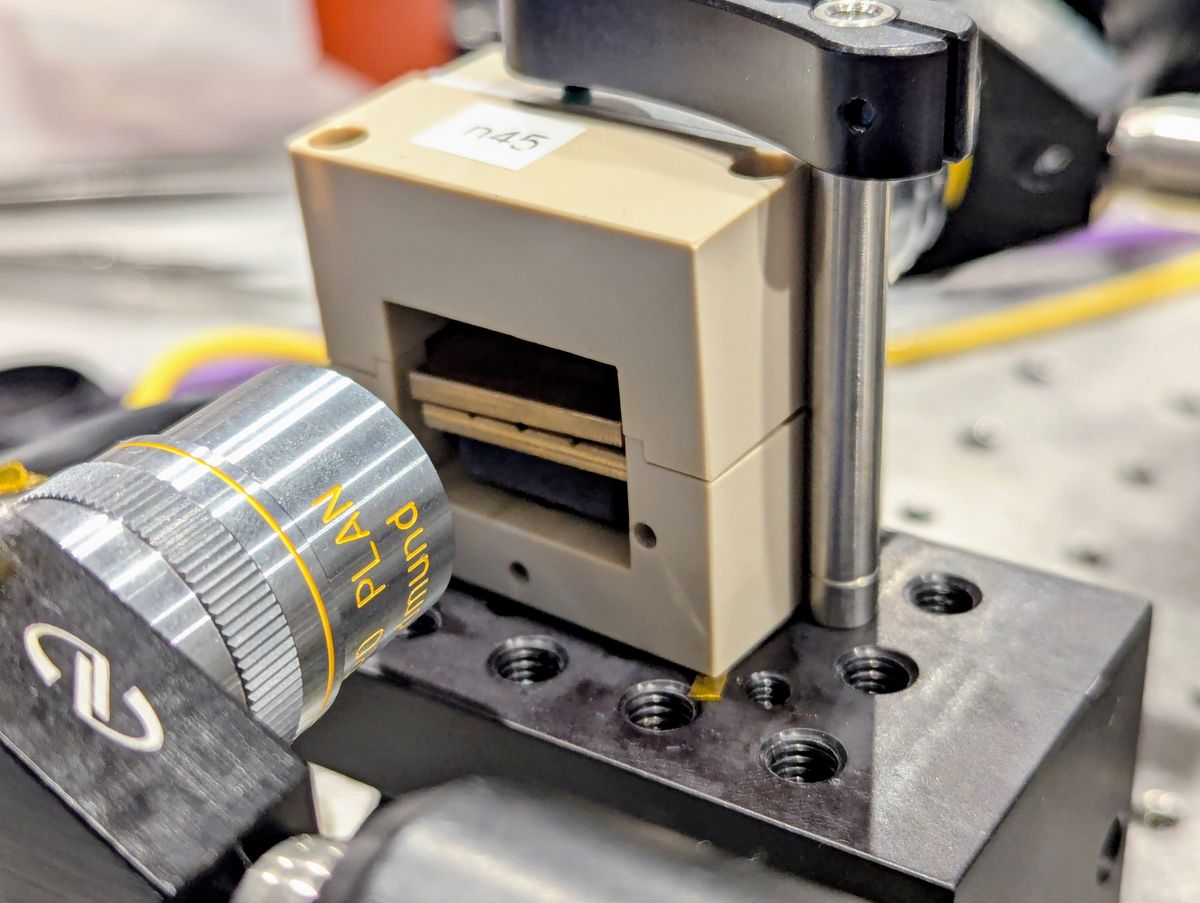
Here is a more clear photo without the oven.You can see the fiber sticking out of both ends of the clamp.
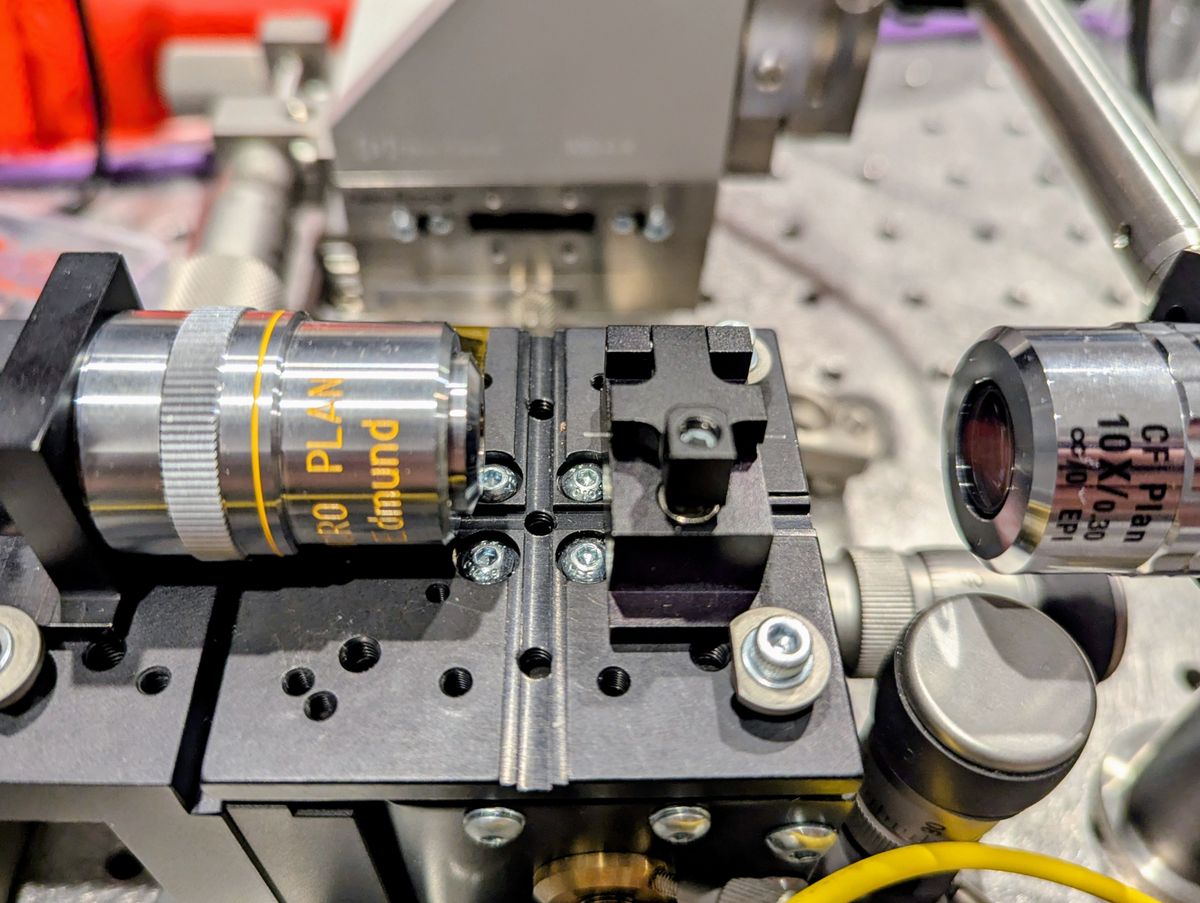
After I couple it into the fiber, I want to see what actually happens to the light, so I use a second microscope objective to focus on the output light, and then a camera (in red) to take the photo.
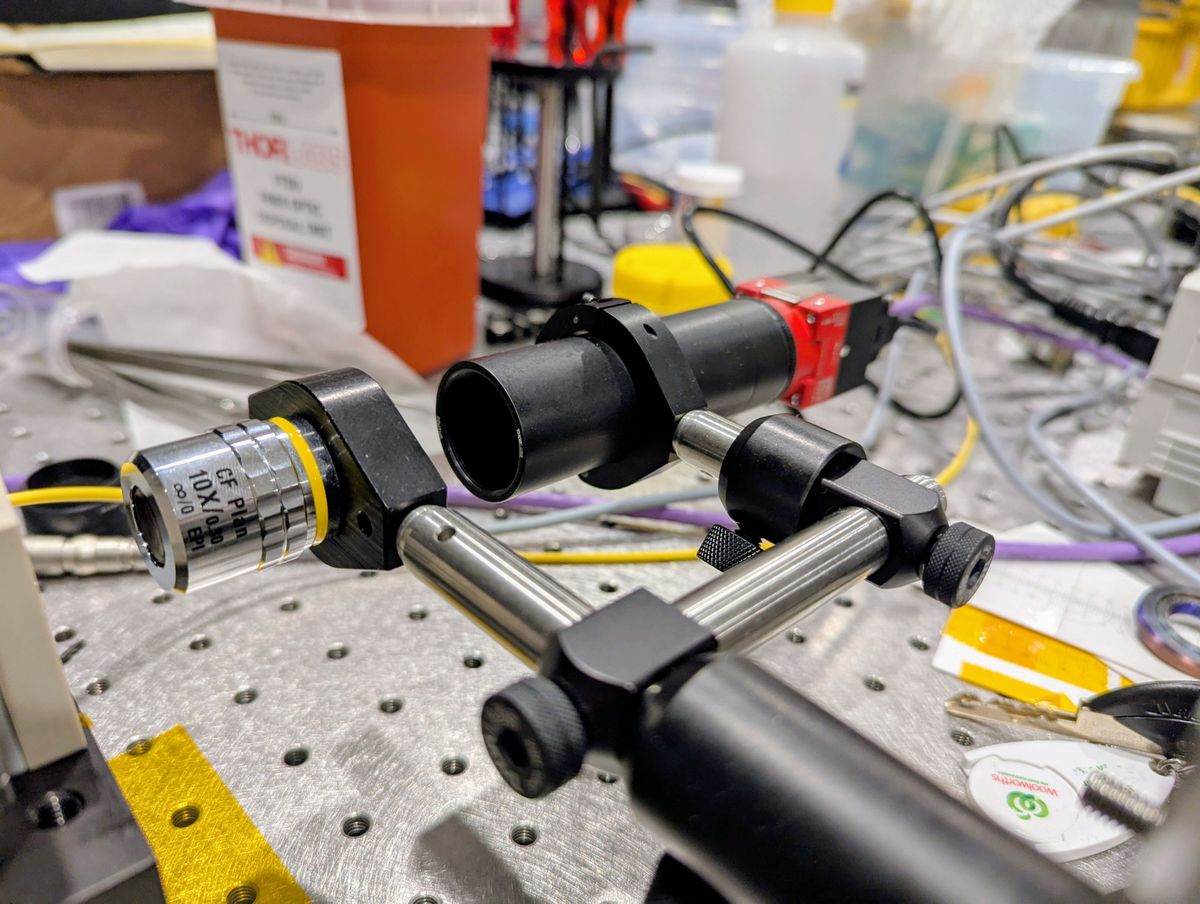
Everything is mounted on 3-axis stagesso I can align these components. That's why everything is mounted "sideways". This is important because these fibres are tiny.
2 So what does it do?
The idea is to get light INTO these photonic crystal fibres, and then take photos of what these fibres do to the light.
Here is a photo I took of the fiber. The entire diameter is approximately 230 micrometers (less than a quarter millimetre). I haven't measured the hole diameter yet, but my best guess <= 10 micro meters.

Notice the hexagonal pattern of holes, ordinarily these holes are just empty (or filled with air). The reflections off these holes are what ordinarily keeps light in the core (where the missing hole should be)
We are altering the fibres somewhat, we are filling the fibres with some liquid (I am keeping it a mystery what for now), so that the light prefers to go inside the holes. That's what you see below:

Notice that there are a few extra missing holes.I don't know why these are missing. Further work needed.
3 How do you fill up the holes?
Crazy enough, the liquid will suck itself up just from surface tension forces (Capillary action for those in the know). All I do is load a syringe with a tiny ammount of the liquid, and pop my fibre inside, and it will suck it up.
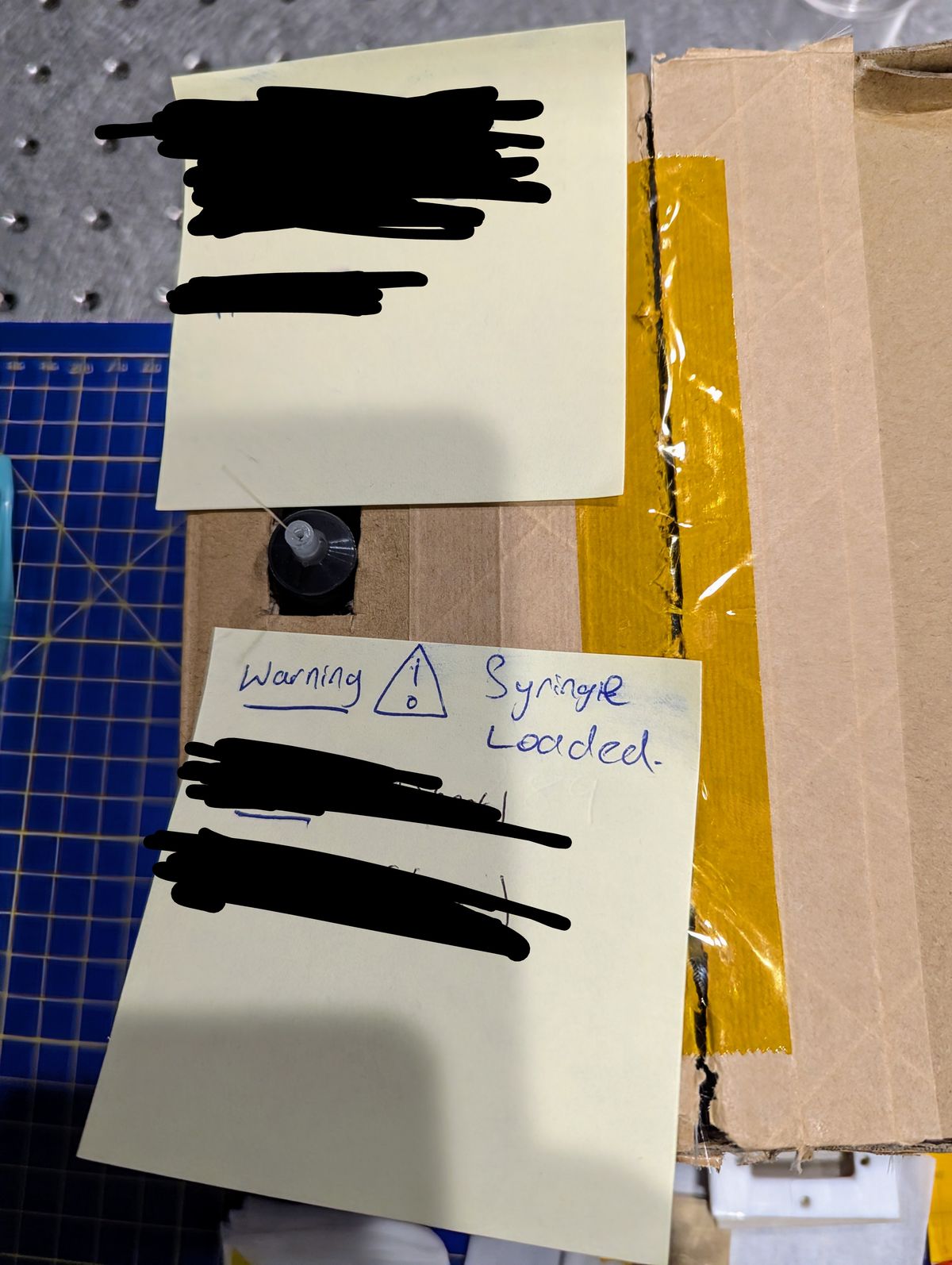
The fibres are very sharp, and very fragile. Which means that given the chance, they will inject themselves under your skin and then snap given the chance. Even more annoying, unlike organic mater like a wood splinter, your body will not try and push the glass out of you, so you will have a perminent splinter for the rest of your life.
As such, Safety Sticky Notes are essential.
Once I have prepared my sample fibre they go in: The Box

4 Wrapping up the tour:
That is everything I have to say for now. I'm not supposed to say why I am doing what I'm doing just yet, but that will come soon once I get some publications out.
That said, if you have any questions, feel free to reach out. I love answering questions and talking about this stuff. I will monitor the comments section on this page, and my email is also in the contact section of my site.